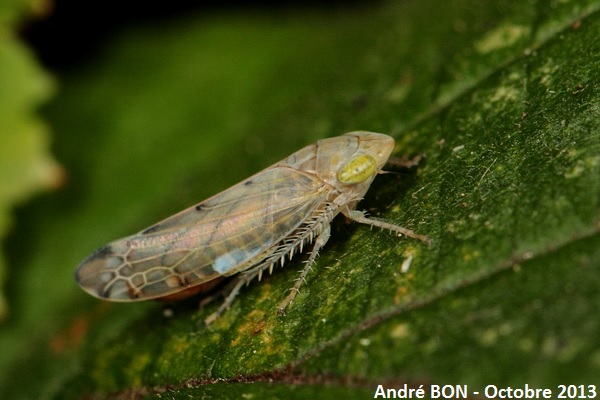
| Synophropsis lauri (Horváth, 1897) |

|
|
Scientific name: Synophropsis lauri (Horváth, 1897) Common name: French name: Cicadelle du laurier Order: Hemiptera Family: Cicadellidae Wingspan : 5.7-6.5 mm. Biotope: On evergreen shrubs, mainly True Laurel (Laurus nobilis) and Common Ivy (Hedera helix). Geographic area: South-western Europe, Near East, extending its range northwards (Switzerland in 2000, England in 2007, etc.) Observation period : Adults are mainly observed from June to November. There can be two broods per year. Females overwinter. |
Synophropsis lauri shows a protruding triangular and almost plane vertex. The antennae are rather long. The fore wings are greyish to reddish with weekly marked pale veins except the following notes. The tips of the veins on the inner edge of the wings are outlined with black. This gives an typical dorsal alignment of three small black spots. The veins are also outlined with black at the apex of the wing where the membrane looks slightly smoky. The legs bear many spines. The larvae are a bright green colour with a pointed abdomen. They are marked dorsally by four small black spots. Fieberiella florii differs from Synophropsis lauri by the wings being sprinkled with small black dots. |
| [To know more about the Synophropsis lauri] [Top] |

|
I have photographed this leafhopper in my garden where you can find Common Ivy (Hedera helix) and a hedgerow of Cherry Laurel (Prunus laurocerasus). |